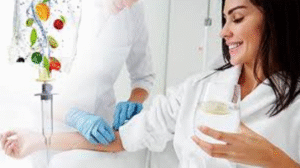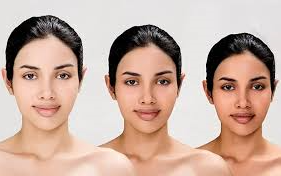Have you ever wondered if there’s a faster way to achieve that radiant, even-toned complexion you’ve always dreamed of? If you’ve been struggling with dark spots, hyperpigmentation, or uneven skin tone despite trying countless topical treatments, you’re not alone. Many people are now turning to skin lightening IV therapy as a potential solution, but is it really the miracle treatment it’s claimed to be?
The quest for brighter, more luminous skin has led to the rise of intravenous treatments that promise dramatic results. Skin lightening IV therapy has become increasingly popular among those seeking to address stubborn pigmentation issues that traditional skincare routines haven’t been able to tackle.
This article will explore everything you need to know about skin lightening IV therapy, from how it works to its potential benefits, risks, and side effects.

What is Skin Lightening IV Therapy?
Skin lightening IV therapy involves the intravenous administration of specific nutrients, vitamins, and compounds designed to brighten the skin and reduce hyperpigmentation. High dosages of glutathione, vitamin C, and other antioxidants are usually injected intravenously (IV) as part of this treatment.
The most common ingredient in these treatments is glutathione, a powerful antioxidant naturally produced by the body. When administered intravenously, glutathione is believed to inhibit the production of melanin, the pigment responsible for skin color. The theory is that by reducing melanin production, the skin will gradually become lighter and more even-toned.
IV therapy introduces these substances straight into the circulation, possibly facilitating greater absorption and more systemic effects than topical therapies, which act on the skin’s surface. Sessions typically last between 30 minutes to an hour, and patients often require multiple treatments to see noticeable results.
How Does Skin Lightening IV Therapy Work?
The mechanism behind skin lightening IV therapy centers on the role of glutathione in melanin production. Glutathione works by interfering with the enzyme tyrosinase, which is essential for melanin synthesis. By inhibiting this enzyme, the body produces less melanin, potentially leading to lighter skin over time.
Key Components of IV Therapy
- Glutathione – The primary active ingredient that inhibits melanin production
- Vitamin C – Supports glutathione function and provides additional antioxidant benefits
- Alpha-lipoic acid – Helps regenerate glutathione and other antioxidants
- Vitamin E – offers anti-aging properties and skin protection.
- B-complex vitamin- Promote cellular activity and general skin health
The treatment works from the inside out, with the idea that nutrients delivered intravenously can reach cells more effectively than oral supplements or topical applications. Proponents claim that this method allows for higher concentrations of active ingredients to reach the skin cells where they can have the most impact.
However, it’s important to note that the skin lightening effects are not permanent. The body continues to produce melanin naturally, so maintenance treatments are typically required to sustain any achieved results.

Potential Benefits of Skin Lightening IV Therapy
Advocates of skin lightening IV therapy point to several potential benefits that have made this treatment increasingly popular:
Skin-Related Benefits
- Improved skin tone – May help create a more even complexion
- Reduced hyperpigmentation – Can potentially lighten dark spots and melasma
- Enhanced skin radiance – A healthy glow could be attributed to antioxidants.
- Faster results – IV delivery may work more quickly than topical treatments
Additional Health Benefits
- Antioxidant support – Glutathione and vitamin C provide cellular protection
- Detoxification – Glutathione is involved in the detoxification of the liver.
- Immune system support – High-dose vitamin C may boost immune function
- Anti-aging effects – Antioxidants may help combat free radical damage
Many patients report feeling that their skin appears brighter and more radiant after a series of treatments. Some also notice improvements in overall energy levels and well-being, which they attribute to the high-dose vitamins and antioxidants received during therapy.
It’s worth noting that individual results can vary significantly, and not everyone will experience the same degree of skin lightening or other benefits. Factors such as skin type, genetics, lifestyle, and the specific formulation used can all influence outcomes.
Risks and Side Effects of Skin Lightening IV Therapy
While skin lightening IV therapy may offer benefits, it’s crucial to understand the potential risks and side effects associated with this treatment. Like any medical procedure involving intravenous administration, there are both immediate and long-term concerns to consider.

Immediate Side Effects:
- Injection site reactions – Pain, swelling, or bruising at the IV insertion point
- Allergic reactions – Can be minor skin irritation to severe anaphylactic
- Headaches: These can happen during or after treatment
- Nausea and vomiting: Some individuals have gastrointestinal discomfort
- Dizziness – May result from changes in blood pressure or fluid balance
Serious Health Risks:
- Kidney damage – High doses of certain compounds may stress kidney function
- Liver complications – Despite its detoxifying properties, excessive glutathione may cause liver issues in some individuals
- Electrolyte imbalances – IV fluids can disrupt normal mineral balance
- Infection – Any invasive procedure carries a risk of bacterial infection
- Blood clots – Rare but serious complication of IV therapy
Long-term Concerns:
- Skin sensitivity – Prolonged treatment may increase photosensitivity
- Dependency – Some patients feel they need ongoing treatments to maintain results
- Unknown long-term effects – Limited research on extended use of high-dose IV glutathione
- Interaction with medications – May affect the efficacy of certain prescription drugs
The severity and likelihood of these side effects can vary based on individual health status, the specific formulation used, dosage, frequency of treatments, and the qualifications of the administering provider.
Who Should Avoid Skin Lightening IV Therapy?
Certain individuals should exercise extreme caution or avoid skin lightening IV therapy altogether due to increased risk of complications:
Medical Contraindications:
- Pregnant or breastfeeding women – There is no proven safety for developing infants.
- Individuals with kidney disease – May not be able to process high doses of nutrients safely
- People with liver disorders – might make pre-existing liver issues worse
- Those with heart conditions – IV fluids may affect cardiovascular function
- Patients with autoimmune disorders – may disrupt the immune system’s ability to function.
Other Considerations
- Active infections – Should be resolved before undergoing IV therapy
- Blood clotting disorders – Increased risk of complications
- Severe allergies – Higher risk of allergic reactions to IV components
- Recent surgery – Healing process may be affected
- Certain medications – May interact with components of the IV therapy
Before considering skin lightening IV therapy, it’s essential to undergo a thorough medical evaluation with a qualified healthcare provider who can assess your individual risk factors and determine whether this treatment is appropriate for your specific situation.
Safety Considerations and Choosing a Provider
The credentials of the practitioner and the quality of tools for the treatment and the facility have a significant impact on the safety of skin-lightening IV therapy. Unfortunately, this treatment is sometimes offered in non-medical settings, which can increase the risk of complications.
What to Look for in a Provider:
- Medical supervision – Treatments should be overseen by licensed physicians
- Proper facilities – Clean, clinical environment with emergency equipment
- Quality ingredients – Pharmaceutical-grade compounds from reputable sources
- Comprehensive consultation – Thorough medical history and examination
- Clear protocols – Established procedures for managing adverse reactions

Red Flags to Avoid
- Unlicensed practitioners – Anyone without the necessary medical training
- Unrealistic promises – Claims of dramatic results without mentioning risks
- Pressure tactics – Pushing for immediate treatment decisions
- Lack of screening – Not inquiring about contraindications or medical history
- Unregulated facilities – Spas or salons without medical oversight
Always verify the credentials of any provider and ensure they have experience specifically with IV therapy administration. Don’t hesitate to ask questions about their training, safety protocols, and experience with complications.
Alternative Approaches to Skin Lightening
Before committing to IV therapy, consider exploring other evidence-based approaches to addressing hyperpigmentation and uneven skin tone:
Topical Treatments
- Hydroquinone – FDA-approved skin lightening agent
- Tretinoin – Prescription retinoid that promotes cell turnover
- Kojic acid – Natural compound that inhibits melanin production
- Arbutin – Gentler alternative to hydroquinone
- Vitamin C serums – Antioxidant protection and mild lightening effects
Professional Procedures:
- Chemical peels – To expose brighter skin, remove the layers of damaged skin.
- Laser therapy – Targeted treatment for specific pigmentation issues
- Microneedling – Promotes collagen production and product absorption
- IPL treatments – Intense pulsed light for pigmentation correction
Lifestyle Modifications
- Sun protection – Daily SPF use to prevent further pigmentation
- Regular skincare routine – Consistent application of tried-and-true products in a skincare regimen
- Healthy diet – Nutrients that support skin health from within
- Adequate sleep – Essential for skin repair and regeneration
These alternatives may take longer to show results compared to IV therapy, but they often have better-established safety profiles and more predictable outcomes.
FAQs
Can skin lightening IV therapy permanently change my skin color?
No, skin lightening IV therapy does not permanently change your natural skin color. The effects are temporary because your body continues to produce melanin naturally. Most patients need ongoing maintenance treatments every few weeks or months to sustain any lightening effects they may have achieved. Once treatments are discontinued, the skin typically returns to its baseline color over time.
How many sessions of skin lightening IV therapy are needed to see results?
The number of sessions varies significantly depending on individual factors such as skin type, desired results, and the specific formulation used. Most providers recommend an initial series of 8-12 sessions, with treatments typically scheduled once or twice weekly.
Some patients may notice subtle changes after 4-6 sessions, while others may require more treatments. Realistic expectations should be discussed with a qualified provider based on your individual circumstances.
Is skin lightening IV therapy legal and regulated?
The legality and regulation of skin lightening IV therapy vary by country and jurisdiction. In many places, the individual components like glutathione and vitamin C are legal when used appropriately, but the practice may not be specifically regulated as a cosmetic treatment.
It’s important to ensure that any provider you choose operates within local medical regulations and that treatments are administered by licensed healthcare professionals.
What’s the difference between skin lightening IV therapy and glutathione pills?
The main difference lies in how the glutathione is delivered to your body. IV therapy delivers glutathione directly into the bloodstream, potentially allowing for higher concentrations to reach your cells. Oral glutathione supplements must be absorbed through the digestive system, where much of the compound may be broken down before reaching the bloodstream.
However, the clinical evidence for skin lightening effects is limited for both delivery methods, and IV therapy carries additional risks associated with intravenous procedures.
Are there any natural ways to boost glutathione levels for skin health?
Yes, there are several natural approaches to support your body’s glutathione production. Eating sulfur-rich foods like broccoli, Brussels sprouts, and garlic can provide building blocks for glutathione synthesis. Regular exercise, adequate sleep, and stress management also support natural glutathione production.
Some foods like avocados, spinach, and asparagus contain glutathione, though dietary sources are not as concentrated as supplements or IV therapy. However, these natural methods work more gradually and may not produce the dramatic effects some people seek.
Conclusion…
Skin lightening IV therapy represents an evolving area of cosmetic treatment that continues to generate both interest and debate within the medical and beauty communities. While some patients report positive results from these treatments, it’s crucial to approach this option with a clear understanding of both the potential benefits and significant risks involved.
This treatment involves intravenous administration of high-dose compounds, which inherently carries medical risks that must be carefully weighed against potential benefits. The limited long-term safety data and the temporary nature of results make it essential to have realistic expectations about what this therapy can and cannot achieve.
Remember that true skin health comes from a combination of proper protection, consistent care, and treatments that are both safe and effective for your individual needs.



